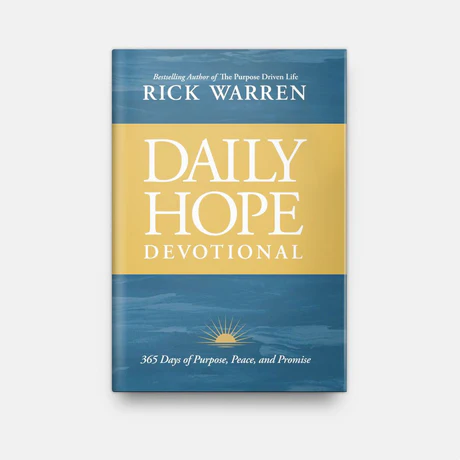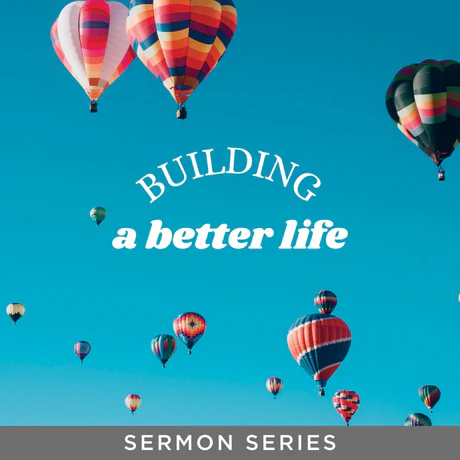FellowshipPreaching/TeachingLeadershipCelebrate RecoveryDiscipleshipSmall GroupsEvangelismWorshipMinistry
Reflections on the Fastest Growing and Largest U.S. Churches

Outreach Magazine just released their Outreach 100 issue for 2013. LifeWay Researchdoes the research for this issue. I was particularly encouraged to see the list focus especially on fastest growing churches. You can subscribe to the magazine here. Here is my article with a bit of analysis of some of the fastest-growing churches in America.
----------------------------
Each year at LifeWay Research, we work together with Outreach Magazine to create the Outreach 100 listings of the country's Fastest-Growing and Largest Churches. On one hand, these lists are one of the most anticipated things we do each year. People seem to eagerly await the lists so they can learn from these churches about what God is doing to build his kingdom across the United States. On the other hand, there are those who complain about the lists. They seem to think this is a way of exalting "big churches" in an effort to make them look better than the churches that are not on the list, when nothing could be further from the truth.
Remember folks: facts are our friends.
I love to learn. I have spent a significant portion of my adult life in the classroom, either as a student or as a professor. These lists feed our hunger to learn as we evaluate the temperature of the churches we study in an effort to learn more about the ways God is working. I hope these lists encourage you and challenge you. I hope, like me, you read them and celebrate the ways God is working. I hope they challenge you to think through your own strategy to reach your community with the gospel.
On this year's lists, we noticed many of the same trends we've seen in the past. Among the recent trends, we continue to see multisite churches becoming more and more common. Among the 100 Largest churches, we find only 12 have a single campus (although one church did not report how many campuses it has). On the Fastest-Growing list, the number with a single campus is much greater—42, reflecting close to a split in the number of churches that do and do not have multiple campuses.
Some once believed this move to grow via multiple campuses was a temporary trend, but it appears to be a trend that's here to stay. While it was once the domain of only the largest churches, we now see smaller churches deploying the same methodology. What's interesting to me is the number of churches that utilize a multisite methodology and are also committed to church planting. The two are definitely not exclusive of one another. I think this may have something to do with the missionary heart of these churches.
SACRIFICE IS TRENDING
As we come to these lists each year, we look for three things: a characteristic trending across the church spectrum; something that stands out as unique; and something that may fly a bit under the radar and yet is surprisingly influential among growing churches.
This year, as my team processed the data, we saw something that excites me and is thoroughly biblical. What's more, it's something in which every church can engage. Something in which every church must engage if it wants to reflect the character of God as a church body: self-sacrifice.
Growing churches are showing a great commitment to multiplying themselves, as we see in the discussion about multiple campuses, and this commitment to multiplication often creates a need for sacrifice. Sacrifice is inherent to the experience of every growing believer—and every growing church.
In another research project we conducted, the Transformational Discipleship Assessment, we learned that growing disciples share a number of common characteristics. Chief among them are: "Obeying God and denying self," "Serving God and others" and "Exercising faith." None of these should come as a surprise, but I think it's important to note that churches are made up of disciples. When these disciples are growing to be more like Jesus, the churches they are a part of reflect these same characteristics.
This growth in maturity is reflected in many of the churches that are also growing numerically at a rapid rate. This is a great thing! It's encouraging that many of the Fastest-Growing Churches are often churches willing to sacrifice. We want to share a couple of these specific stories with you this year.
THE STORY OF A CHURCH THAT MISSED THE LIST
The first story is of a church that didn't even make the list. While that may seem strange, you should know the only reason it didn't make the list is because it took an important, sacrificial step to advance God's kingdom. That step hurt it in the short term but is already leading to incredible kingdom growth. I'm confident you'll hear its name again in the future.
Beach Church, a United Methodist congregation in Jacksonville, Fla., was experiencing exciting growth as it attempted to reach its community. In 1997 it decided to add a contemporary service and saw immediate growth. It exceeded 1,000 in worship and watched as God did surprising things among within the church.
This growth continued for a few years, until it experienced a pastoral change in 2002.Jerry Sweat joined the church as the new senior pastor and recognized the church wasn't effectively reaching the 18- to 30-year-olds living near the church. In an effort to reach out to them, the leadership team added an additional service, one that would meet at 11:22 each Sunday morning. It named the new service 1122.
Originally, the church intended for this new service to be led by a rotation of preachers from its staff. It soon realized its youth pastor, Joby Martin, was uniquely gifted for this role, and he began to assume primary leadership for the new service; it exploded with growth. While Beach Church was already a good-sized church, the new service attendance outnumbered the church's combined attendance at other services.
Through a series of events, the leadership contemplated how to handle space issues, scheduling issues, staff issues and so on. After much prayer and counsel from their denominational leaders, the leadership of Beach Church decided to relaunch its church while simultaneously launching the 1122 service as an entirely separate congregation.
It's important to understand this was not a church split. It was a selfless, sacrificial decision to see the kingdom grow. Pastor Jerry Sweat describes it this way:
"This was all about … multiplying the mission of reaching people for Christ and raising up disciples. And then when everything began to shake at the joints and when everything seemed to be falling apart, always reach out … to the mission. That was our true north in the whole thing."
QUESTIONS AND ANSWERS
This intentional decision, of course, brings up many questions. How are the separate churches going to be financed? Where will they meet? Which congregation will the various church members decide to join? How will the staff be directed? Will new staff be required? We could go on and on. While these questions can seem a bit overwhelming, Beach Church and the 1122 service, which became The Church of Eleven22, walked through the process deliberately and prayerfully.
They decided they would add the staff they needed during the transition. For almost a year, they operated with two separate staffs. They worked together on a capital campaign, raising substantial dollars. This combined capital effort helped renovate new space for The Church of Eleven22 and helped pay off debt for Beach Church. It also created resources to help fund unexpected expenses during the transition.
Ryan Stone, who serves as the lead ministry pastor at The Church of Eleven22 under Pastor Joby Martin's leadership, said they felt like they were accidental church planters, responding to God's movement.
It's incredibly encouraging to see Beach Church nurture this kind of kingdom growth, even though the church knew that giving away the 1122 service would potentially mean it would see a decrease in attendance and financial support. This is the kind of sacrifice a maturing Christian embraces.
WHAT HAPPENED?
After almost a year of preparation, Beach Church and The Church of Eleven22 relaunched and launched, respectively, on the same Sunday. Prior to their launch Sunday, they typically averaged around 2,200 people, combined. On their launch Sunday, however, they saw 4,200 people attend their services.
In the weeks following, Beach Church did see a substantial decrease in its total numbers. Its sacrifice was real. And yet, in response to its faithfulness, in the year since the relaunch, it's seen a 37 percent increase in its worship attendance.
The Church of Eleven22, meanwhile, continues to see God do amazing things. On its launch Sunday, attendance topped 3,000, and on Easter Sunday of this year, its first Easter as a church, it saw well more than 5,000 people in attendance.
There is one additional aspect of sacrifice you should know about, though, and that is the denominational sacrifice involved. The Church of Eleven22 was launched out of Beach Church, a United Methodist congregation, but The Church of Eleven22 is not a Methodist congregation. It is a nondenominational congregation that also affiliates withActs 29 (a church planting network which has some different theological expressions).
In a remarkable display of partnership, these churches served together to see the kingdom grow, even when they had to sacrifice to do so, and God is honoring their faithfulness. I love what Pastor Jerry Sweat had to say about this faithfulness:
"This was always a kingdom advancement. We continued to say over and over again that kingdom advancement was not about an address, it wasn't about a denomination—it was about a movement."
SACRIFICING TO DEVELOP OTHERS
Another great example of sacrificial leadership is seen among churches intentionally giving away their resources and leaders for the sake of the church. Churches like this are raising up leaders, training them and then deploying them, rather than keeping them in house. They also are sacrificially giving away resources that are precious to them, simply because they want to see the kingdom of God grow. Element Church (No. 30, Fastest-Growing), outside of St. Louis, Mo., is a church working diligently to do just that.
Element Church was planted in Wentzville, a suburb on the west side of St. Louis. Erik Lawson, who is its lead pastor, told us two stories that struck us as great examples of selfless, sacrificial leadership that are illustrative of the kind of sacrifice we see occurring across the nation in effective churches.
In the early stages of Element Church, long before it became the church it is today, it was established but still small. Lawson heard about a struggling church planter in the area. Believing that God was encouraging him to help the other pastor, Lawson invited him to lunch. In the vehicle on the way to meet with the other pastor, Lawson believes the Lord called him to give financially to this neighboring church plant. The amount he was called to give from Element Church to this area church plant was no small amount. It was an amount that, at the time, Element could have used, being a church plant itself. However, in response to the prompting of God's Spirit, Element gladly blessed the other congregation, desiring to be obedient to God and to see the kingdom grow.
Another example of this kind of selfless leadership comes from Element Church's desire to see staff go beyond their church to start new churches and ministries, and Element's willingness to encourage them to that end. Rather than keeping people, resources and giftedness to itself, Element looks to grow the kingdom by deploying these things wherever there is need.
"There are senior pastors who are threatened by staff who feel called to go out and plant," Lawson says. "There is [often] an environment where you better not tell your pastor, or you are going to need an attorney because you're going to get fired. It's a very unhealthy paradigm.
"2 Samuel 18:15 says, Absalom had no sons, so he had to build a monument to himself. The role of the pastor is to reproduce spiritual sons in the Lord. They are our ministry," Lawson says. "My first ministry is my staff, and my ministry is to help equip them for the purpose that God has for them. And if some of them are called to go out and plant a church, then how much better is it for me to be a part of that process, to be a spiritual influence in their life, and see that legacy, something that can outlive me?"
This kind of selfless, sacrificial behavior is the kind the church calls for from her members, and it is the kind she must model if the church is going to grow, if Jesus is going to be honored and if those who do not know Jesus are going to see their lives transformed.
CHURCH GROWTH, KINGDOM GROWTH
Pastor Stovall Weems and Celebration Church, in Jacksonville, Fla., are familiar names to many people. Celebration Church has found a place on both the Largest list (No. 37) and the Fastest-Growing list. In fact, this year it is recognized as the fourth Fastest-Growing church in America. For some, it might seem surprising that a church this large, and a church growing as rapidly as Celebration is, is also committed to sacrificially distributing its time and people to plant other churches. And yet it is aggressively doing so. For many, it would seem to require funny math to combine aggressively distributing funds and personnel to plant other churches, with rapid growth in the same church, and yet Celebration is another example, in a long line of examples, showing that sacrifice to multiply churches often goes hand in hand with growth in the church doing the sacrificing.
Before Weems started Celebration Church, he had a desire to serve overseas as a missionary and church planter. Instead, God had other plans, and he found himself in Jacksonville, Fla., planting Celebration Church. The missionary mindset that once drove him to consider overseas church planting was still heavily influential in his own life as he planted Celebration.
"I realized that through planting Celebration I could plant so many more mission-minded churches, and we could have a far greater impact planting a church here in America that would be a mission-minded church that would plant other mission-minded churches," Weems says.
This commitment to multiplication, not just growth, continues to drive Celebration today. In fact, Weems is not only committed to planting other churches, but he is also committed to sending members of Celebration out with each church it plants. He wants Celebration to be a missionary sending church.
"Any launch we do, people from our church always go with them," says Weems. "We had several people go to D.C. to be part of the launch team. We consider it part of God's blessing.
"We believe if we keep sending, God will keep bringing, so sending is a big part of our church culture. Whether that is through missions or a campus or a church plant, we want to send," adds Weems. "We want to extend the kingdom through church planting, which we are very passionate about."
I am convinced this kind of missionary spirit, this apostolic impulse, is what allows Celebration Church to not only be a fast-growing church itself, but to be a multiplying church as it works to expand not just a church, but God's kingdom.
One final thing that intrigues me about the sacrificial spirit of Weems and Celebration Church is their desire to plant in partnership with others, rather than planting alone. I have written before that I believe denominations and networks are a good thing. When they are functioning well, they can be a great tool God uses to grow his kingdom.
Weems agrees with that. He currently serves on the leadership council for theAssociation of Related Churches (ARC), a network that is planting churches all over the world. Of his commitment to plant through ARC, as opposed to going it alone, he says, "We have planted several churches; besides our own campuses and international churches, we do all of our church planting through ARC. We are able to do far more in partnership with other churches, which ARC allows us to do."
I think more churches need this kind of partnering and sacrificial spirit, and I am convinced they are key ingredients to Celebration Church's own church growth, as well as its amazing investment in kingdom growth.
The word of God reminds us that the kingdom of God will advance. There is no stopping it. God will be victorious, and his bride, the church, will be glorious. We can either be a part of that or not. As I look across the landscape of contemporary evangelicalism in the United States, I am encouraged to see churches that take seriously God's call to be like Jesus and that are committed to advancing the gospel, even when it hurts. May we see this trend continue to grow.







